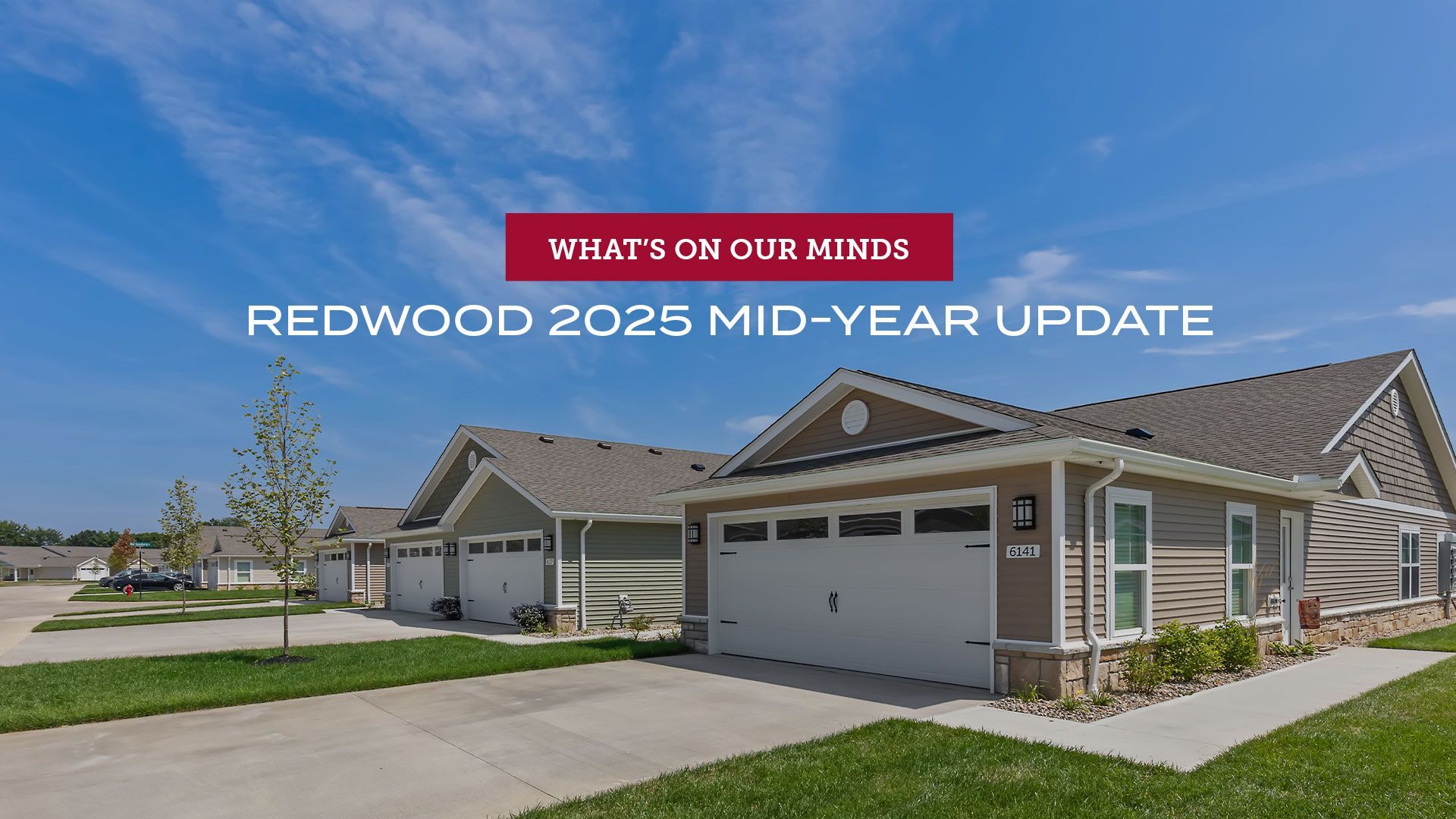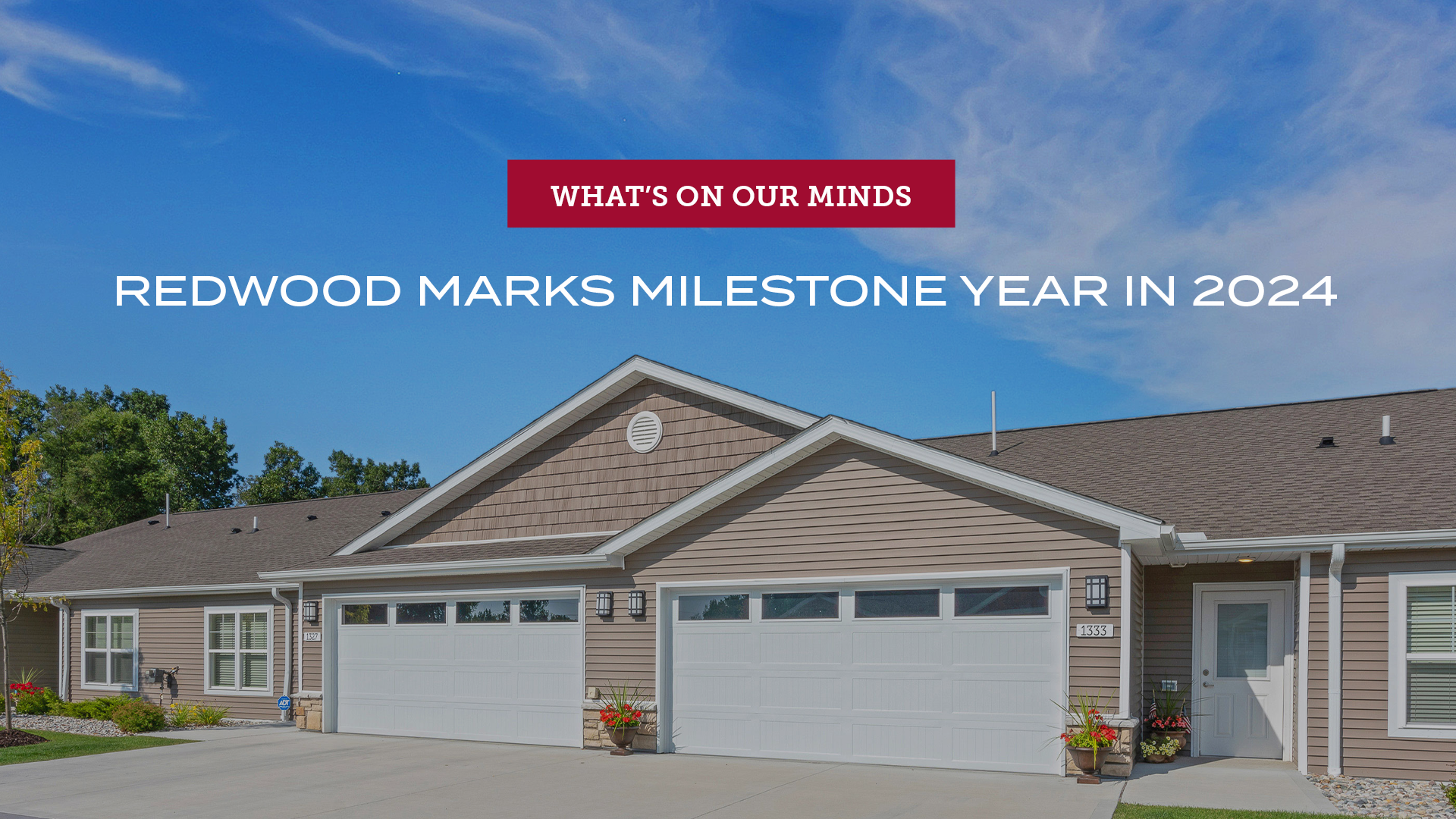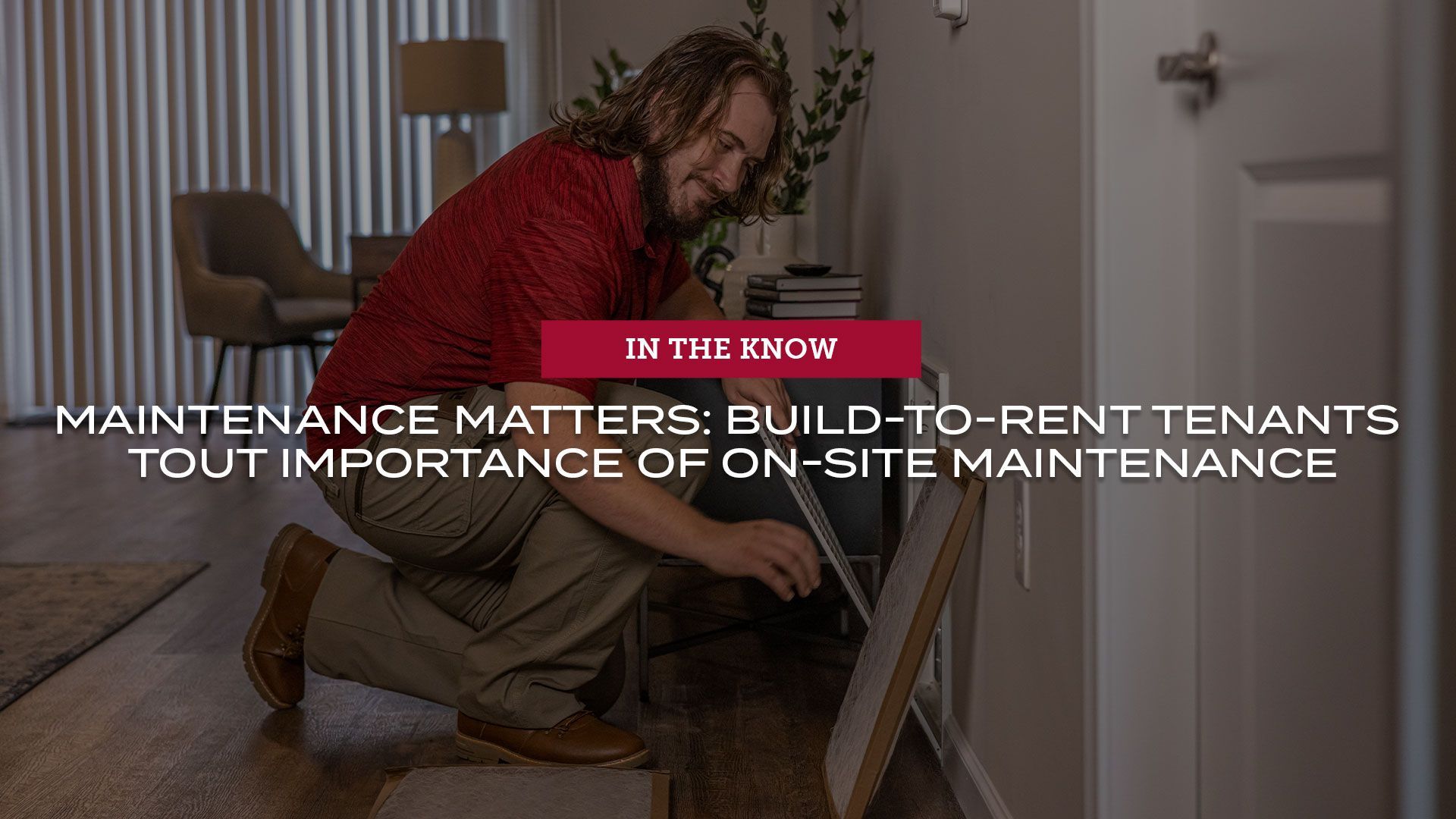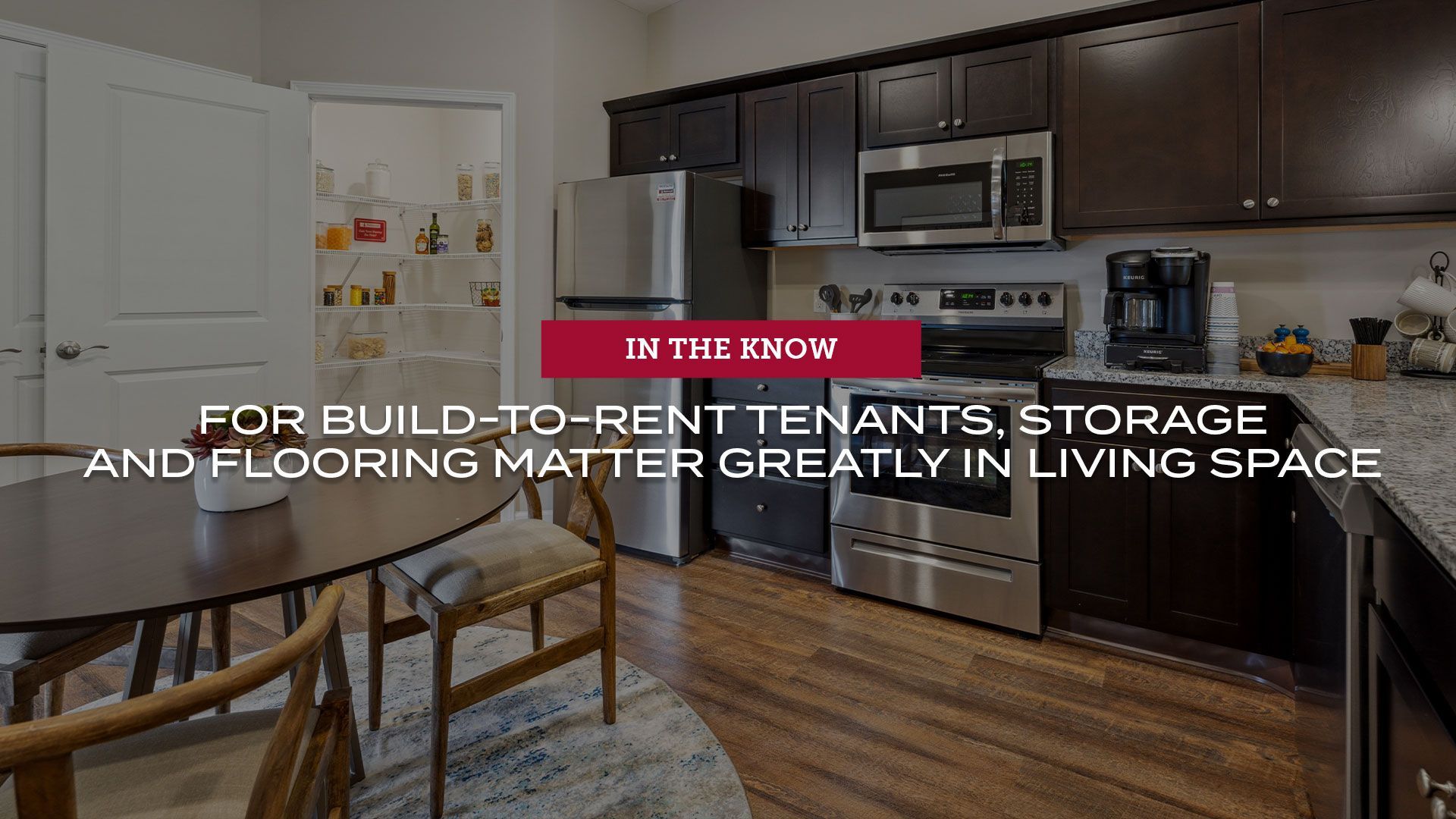What's On Our Minds: The Build-to-Rent Boom
Q&A with David Conwill, Executive Vice Chairman
at Redwood Living, Inc.
A combination of factors is creating a surge of interest from residents and investors in build-to-rent housing opportunities. Industry leader and Redwood Living Inc.’s executive vice chairman David Conwill shares his insights about this growing institutional investment class.
Q: For those unfamiliar with the build-to-rent concept, can you explain what this growing class of real estate is all about?
A: There is a large stratosphere or spectrum of different housing types that build-to-rent encompasses. For example, the concept includes large single-family homes in a neighborhood setting with three to four bedrooms on a single-family lot with a yard. Developers are building these properties to provide high-end rental housing that appeals to families. Build-to-rent also includes more of what a Redwood Neighborhood involves—single-story apartment homes with two bedrooms, two bathrooms and attached garages.
The build-to-rent space was born post-Great Recession with the single-family for-rent industry as investors acquired and aggregated homes that were lost to banks. This movement helped it become an institutional class of real estate thanks to large institutional investors. Homes were no longer available to purchase at reasonable values in areas where institutional investors wanted to own product, so naturally the only other option was to build new product.
Interestingly, Redwood has been in this space—in fact, I would argue we pioneered the concept—long before the vernacular of “build-to-rent” existed. We built our first project in 2001, and the portfolio grew to almost 10,000 apartment homes before build-to-rent became an institutional class of real estate.
We knew a long time ago that it comes down to the needs of the customer. Historically, owners and developers of residential rental real estate would prioritize investor returns and that investment thesis over the needs of the consumer by focusing on density. Redwood de-emphasizes high-density and focuses more on a residential home-type experience. Our thesis has been proven true by the new institutional investor craze and desire to jump into the space.
Q: As you mentioned, build-to-rent communities are becoming increasingly popular—what factors do you think are contributing to this shift in the industry?
A: At the end of the day, it comes down to demographics and population. We know there is a housing shortage not just in certain markets—it is a national macro-level issue. We also know there is an owner unaffordability crisis. As fewer homes are available in any given market, more people are priced out of the market. As such, progressive communities understand the need for zoning and are incentivizing and encouraging new housing developments.
So, if you look at the bigger picture, the build-to-rent industry is tackling a couple different things. It is trying to produce more housing supply for people who are renters by choice and want to maintain some optionality with their life. It also provides a more affordable alternative for those who do not necessarily want to produce a 20% down payment and buy a home, and also are not interested in living in a multi-level apartment complex. These renters are willing to pay more for a higher caliber rental product that gives them the feeling of a single-family home. It’s a lifestyle decision.
Q: While it may appear like build-to-rent is a relatively new concept, as you mentioned it has been the foundation of Redwood's model for decades. How does that position Redwood to better serve its residents?
A: The beauty of Redwood is that every Redwood apartment neighborhood offers the same experience, so customers can set an expectation. Our team members, vendors and ambassadors can also create a consistency that leads to exceeding those expectations. That consistency is all-inclusive—from floor plans and architecture down to the leasing process, customer service and property maintenance. Speaking of maintenance, residents appreciate the convenience and peace of mind that comes with living a maintenance-free lifestyle—just another one of the many advantages that come with living in any Redwood apartment home.
It is also worth noting that every Redwood Neighborhood is named Redwood. While that might be common in the restaurant or hospitality industry, it is not as much in multifamily. So, whether it’s Lake Wiley, South Carolina or Waukee, Iowa, you know any Redwood Neighborhood is going to look and feel the same. We prioritize creating that consistent brand across our entire portfolio.
Q: In addition, how does that longevity benefit investor partners?
A: First, we should consider the product. As stated, there is a tremendous demand and lack of supply, so from an investment perspective, investors can participate and provide a huge need and a solution in the marketplace.
Whether we are talking about single-story apartments specifically or the general build-to-rent industry, the development process can be a challenging, time-consuming endeavor – finding land, going through entitlements, mitigating issues that come with developing land, etc. It can take years from the time we identify a piece of land until residents start moving into newly completed apartment homes. So, it’s a nice opportunity for an investor to partner with an enterprise like Redwood that has an established operating platform and an exceptional track record of delivering consistent product over and over throughout the Midwest and Carolinas. It all differentiates Redwood from other build-to-rent developers and helps mitigate risk for an investor that is looking to deploy money in a safe, secure investment.
Q: Is there a certain type of investor that is a particularly good fit for a Redwood project?
A: We appeal to investors who are seeking a yield on their investment—a pay rate that is anticipated on their principal investment with the knowledge that their principal is invested in an apartment neighborhood that is managed by a company with a track record of managing high-quality apartment neighborhood with the projection that the principal will be returned at some future date.
There are many developers out there operating as merchant builders, meaning they develop one-off projects with the intent to sell to an institutional investor. This type of strategy might appeal to an investor looking for a short-term play, as opposed to someone who invests with Redwood, a company that has never sold off any of its build-to-rent projects. We’re building a brand and an operating platform that lend themselves to long-term investment benefits—cash flow equity, tax benefits, etc.
Q: How do you see the future of build-to-rent evolving?
A: I think the future is very bright for the build-to-rent space. As the general population continues to grow and age, we will see an ongoing need and increased demand for this class of real estate. I think it is in the best interest of the United States to continue to have pro-housing policies throughout all levels of government so that those that have the expertise, skills and experience can help address the demand by developing build-to-rent communities. And Redwood is eager to do so—to remain consistent in growing in new suburban markets throughout the Midwest and Carolinas, which is our primary focus.
To speak with David Conwill or any member of Redwood’s investor relations team, call 216.360.9441 or fill out a contact form.
The information contained in this presentation is provided to you for informational purposes only and is not to be used or considered as an offer or invitation to sell or issue or any solicitation of any offer or invitation to buy securities in a company, or any advice or recommendation with respect to such securities. An investment in a Redwood project is limited to only those persons who qualify and can verify their status as an “accredited investor” under Regulation D of the Securities Act of 1933, as amended (the “Securities Act”). Investment opportunities in a Redwood project are speculative and involve substantial risk. You should not invest unless you can sustain the risk of loss of capital, including the risk of total loss of capital. Certain statements in this presentation constitute "forward-looking statements" within the meaning of the Securities Act. Any statements contained herein that are not statements of historical fact are deemed to be forward-looking statements. It should not be assumed that future investments in a company, project or business transactions with Redwood or any affiliate will be profitable or will equal or exceed the performance of previous apartment neighborhoods developed and managed by Redwood. Investors should consult with a professional investment advisor that is aware of the investor’s circumstance before selecting an investment. Investments in a Redwood project are illiquid, long-term investments that cannot be sold or exchanged.










